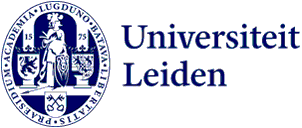ESOF 2022: The effect of the online world on adolescents
In the online panel discussion of ESOF 2022 ‘The effect of the online world on adolescents’, together with Amy Orben, Professor Eveline Crone, Sterre van Riel, Professor Anne-Laura van Harmelen and Professor Jan Sleutels, Professor Ton Liefaard shared his research on adolescents and the online world in relation to children’s rights.
Firstly, Liefaard outlined some important concepts of children’s rights, which are human dignity, equality, and the best interests of the child. The two core aspects of children’s rights are their right to be protected against violence and exploitation and the right to development, education, and information. The UN Committee on the Rights of the Child states, in General Comment No. 25(2021) that meaningful access to digital technologies can help children realise the full range of their civil, political, cultural, economic, and social rights. However, the Committee also states that the digital environment can also open up new ways to perpetrate violence and threats against children. This is especially relevant in light of the COVID-19 pandemic. According to this General Comment No.25, nation States should implement safety and protective measures in accordance with the ever-evolving capacities of children.
Leiden Law School @ESOF 2022
Due to the selected cookie settings, we cannot show this video here.
Watch the video on the original website orLiefaard stated that in order to implement protective measures against violence and threats in the digital environment, adults need to acknowledge that many children do live a large part of their lives online. Currently, there seems to be a disconnect between children and adults when it comes to technology. It should also be noted that children can also suffer from not having access to a digital environment. This was illustrated during the pandemic, where children without access had a lack of information which could lead to stress.
Nation States should protect children from the digital environment, but also understand that children need this digital environment as well. This environment forms an increasingly central role in their education, culture, and social networks. Therefore, investment is needed in measures to strengthen the capacities of adolescents to protect themselves from online threats or violence. This can be done through teaching digital literacy, active engagement of adolescents in the design of online safety measures, and providing adolescents with information, assistance, and support.
Liefaard concluded his lecture by stating that adolescents should always have a right to have a say in the world they live in. It is for adults to give them that space.
